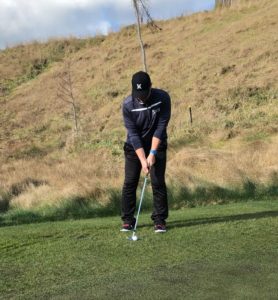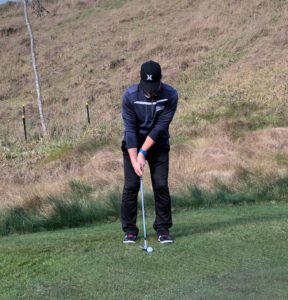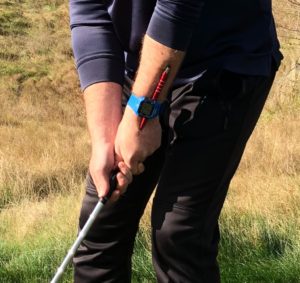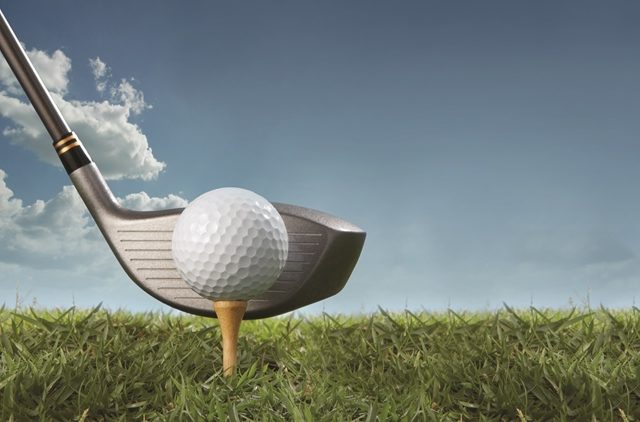Excessive wrist action when chipping is the common cause of ‘chunky/heavy’ or ‘clean/thin’ chip shots.
If you work on the following practice drill it will improve your ability to consistently achieve the desired ‘crisp’ contact when chipping.
Set-up position.
All too often I see people setting up to their chip shots incorporating ‘too much’ forward lean of the shaft (See photograph 1).
The problem with this ‘set-up’ position is, it not only de-lofts the club face angle/loft but more of a concern is the fact that doing so reduces the clubs natural ‘bounce’ angle on its sole. Reducing the ‘bounce’ angle on a club causes its ‘leading edge’ to dig in to the turf excessively which will significantly slow down the club head momentum through impact.
The correct set-up is shown in photograph 2: In this photo, you can see that my hands aren’t significantly
ahead of the ball and my left arm and the club shaft almost ‘marry –up’ in a straight line. Setting up in this way retains the true loft on the club selected and importantly retains the amount of ‘bounce’ on the  sole of the club.
sole of the club.
The chipping motion.
There will always be an amount of ‘wrist-hinge’ on the back swing motion (more evident in the right wrist) – this creates a ‘steeper angle of attack’ into the ball on the forward motion but also prevents the club ‘snagging’ on the back swing motion particularly when playing from a fluffy lie. I encourage you to watch the chipping actions of the pros – you will notice that when hitting the vast majority of their chip shots, at impact they do so with a ‘flat’ left wrist.
The most common fault I come across when working with amateur players on their chipping and short games is an excessive amount of wrist action (particularly on the through swing when they unhinge ‘too much’ and ‘too early’ (see photograph 3).
When the right wrist overpowers the left prior to impact, it causes the ‘leading edge’ of the club (not the club face and grooves) to make contact with the ball close to its equator – the resulting ‘thinned’ strike accelerates the golf ball forward low and with excessive power.
Practice drill.
You will need a short ruler or a pen and you will need to wear a glove or wristwatch on your left hand to perform this practice drill. The correct ‘setting up’ of this drill is the key to its success.
Position the ruler/pen so that one end of it rests 2/3 inches above your left wrist whilst the other end rests against the back of your left hand 4/5 cm short of your knuckles (within your glove or wedged within your watchstrap to keep it in place) Photograph 4 
Now, quite simply practice hitting chip shots with your wedge/ 9 iron, 8 iron etc and hold the ‘finish’ position just after impact.
Throughout the motion, the bottom of the ruler/pen should ‘NOT’ dig into the back of your left hand. It should feel like your hands are ‘leading’ the club head into impact.

